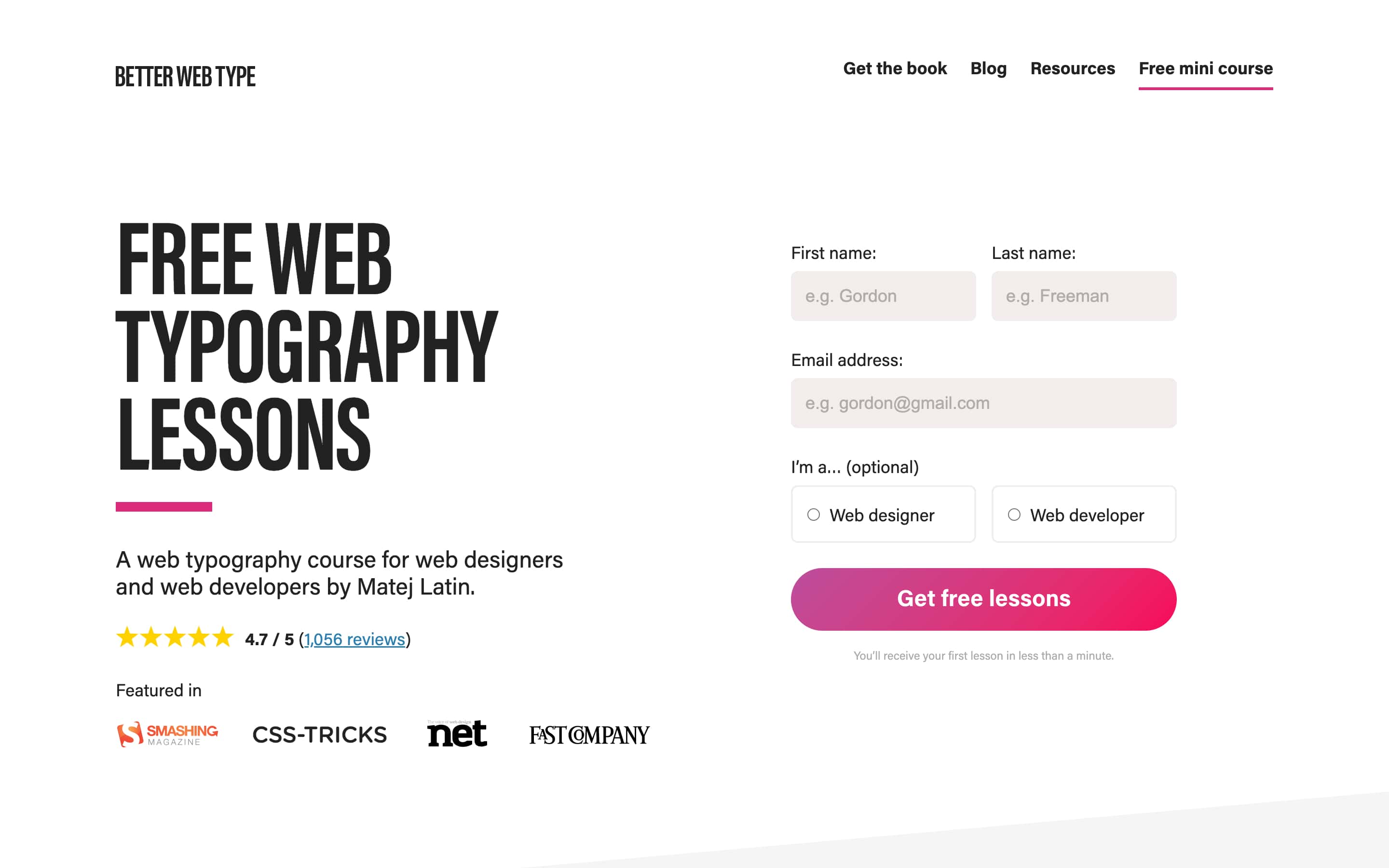Blitz News Digest
Stay updated with the latest trends and insights.
Type Right: The Secret Sauce for Stunning Web Design
Unlock the secrets to stunning web design! Discover essential tips and tricks that will elevate your digital presence and captivate your audience.
Understanding Typography: The Key to Stunning Web Design
Typography plays a crucial role in web design, influencing not just the aesthetics of a site but also its overall user experience. The selection of fonts, sizes, and spacing can make a significant difference in how content is perceived and consumed. For instance, using a well-chosen typeface can enhance readability and draw attention to key messages, making information more accessible. Conversely, poor typography can lead to confusion and distract users from the intended purpose of the website. It is essential for designers to understand the importance of typography in order to create visually appealing and functional websites.
When it comes to stunning web design, there are various factors to consider:
- Font choice: Select fonts that align with your brand and evoke the desired emotions.
- Hierarchy: Use different font sizes and weights to establish a clear hierarchy, guiding users through the content.
- Spacing: Proper alignment and spacing between letters and lines can improve legibility and aesthetics.

5 Essential Typography Tips for Effective Web Design
When it comes to web design, typography plays a crucial role in conveying your message effectively. The first essential tip is to select appropriate font types. Choose fonts that reflect the personality of your brand while ensuring readability. A combination of a serif font for headlines and a sans-serif font for body text often creates a visually appealing contrast. Consider using no more than three different fonts throughout your site to maintain consistency and avoid overwhelming your audience.
Another important aspect is font size and spacing. Proper sizing ensures that your content is easy to read across various devices. A general rule of thumb is to set your body text between 16px and 18px, with headlines scaled appropriately larger. Additionally, utilize line height and letter spacing to make your text more legible. Optimal line height is usually around 1.5 times the font size, which enhances readability and improves the overall user experience.
How to Choose the Right Fonts for Your Website: A Beginner's Guide
Choosing the right fonts for your website is crucial for creating a positive user experience. Fonts can affect readability, convey your brand identity, and enhance your overall design. As a beginner, start by considering font pairings that complement each other. A general rule of thumb is to pair a serif font with a sans-serif font, as this combination often creates a visually appealing contrast. Additionally, ensure that your chosen fonts are legible on various devices, from desktops to mobile phones.
When selecting fonts, it’s important to think about the tone you want to convey. For example, serif fonts often evoke a sense of tradition and reliability, making them ideal for businesses like law firms or financial institutions. On the other hand, sans-serif fonts are typically modern and clean, suitable for startups and tech companies. To finalize your decision, consider testing your font choices by creating sample web pages and soliciting feedback from potential users. This helps ensure that your website not only looks great but also resonates well with your audience.